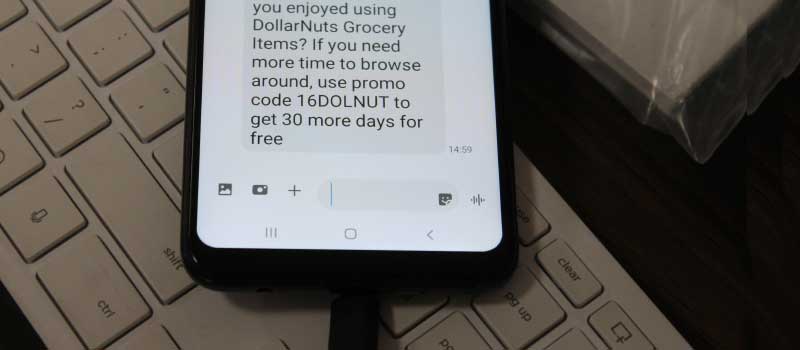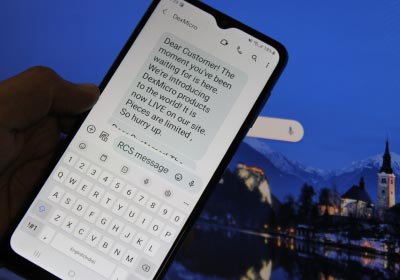Costs Associated With SMS Software
The costs associated with SMS (Short Message Service) software can vary depending on several factors, such as the provider, the features included, the volume of messages, and the payment model. Different costs associated with SMS software and how they can affect a business's budget:-
-
01 Subscription Fees
Most SMS software providers charge a subscription fee to use their platform. These fees can vary depending on the provider and the features included. Some providers offer different pricing tiers, with higher tiers including more features and higher message volume limits.
-
02
API Fees
Some SMS software providers offer APIs that allow businesses to integrate SMS capabilities into their existing systems. These APIs may have additional fees, such as a one-time setup fee or a recurring usage fee.
-
03 Message Fees
Message fees are another cost associated with SMS software. Providers usually charge per message, and the cost can vary depending on the destination and the volume of messages. International messages may incur additional fees, and some providers may offer discounts for larger message volumes.
-
04
Short Code Fees
Short codes are five or six-digit numbers used for mass messaging campaigns. They are typically used by larger businesses or organizations that send a high volume of messages. Short codes can be expensive to acquire and maintain, with fees ranging from several hundred to several thousand dollars per month.
-
05
Long Code Fees
A long code is a dedicated phone number used to send and receive SMS messages. Some providers charge an additional fee for a long code, which can be a one-time fee or a recurring fee.
-
06
Additional Features Fees
Some providers offer additional features such as message tracking, two-factor authentication, or mobile keywords. These features may come with additional fees or be included in a higher pricing tier.
-
07
Payment Model
Finally, the payment model can also affect the costs associated with SMS software. Some providers offer pay-as-you-go pricing, which allows businesses to pay only for the messages they send. Other providers may require a minimum monthly commitment or offer a discount for prepaying for a certain volume of messages.
Conclusion: The costs associated with SMS software can vary depending on subscription fees, message fees, long code fees, short code fees, API fees, additional feature fees, and the payment model. Businesses should carefully consider these costs when choosing an SMS software provider to ensure they can stay within their budget while still getting the features and functionality they need.
Ensure the Privacy and Security of the SMS Messages

SMS (Short Message Service) is a widely used communication protocol for sending and receiving text messages between mobile devices. SMS software, also known as text messaging software, allows users to send and receive SMS messages using a computer or a web-based application. While SMS software can provide many benefits, such as the ability to send and receive messages from a computer or to send bulk messages to multiple recipients, it also presents privacy and security concerns. In this article, we will discuss how to ensure the privacy and security of SMS messages sent through SMS software.
-
Choose a Reliable SMS Software
Provider
The first step to ensuring the privacy and security of SMS messages is to choose a reliable SMS software provider. Look for a provider that is well-known and has a good reputation in the industry. The provider should have strong security measures in place, such as encryption of messages in transit and at rest, as well as secure storage of user data.
-
Use End-to-End Encryption
End-to-end encryption is a method of secure communication that ensures only the sender and the intended recipient can read the message. When using SMS software, it is important to use end-to-end encryption to protect the privacy and security of your messages. End-to-end encryption can be achieved by using a secure messaging app that supports encryption or by using a third-party encryption tool.
-
Use a Secure Connection
When using SMS software, it is important to use a secure connection to ensure the privacy and security of your messages. Look for software that uses HTTPS (Hypertext Transfer Protocol Secure) to encrypt all data sent between your computer and the SMS software server. Additionally, make sure that the SMS software provider uses secure servers that are protected by firewalls and other security measures.
-
Be Wary of Phishing Attacks
Phishing attacks are a common method used by cybercriminals to steal sensitive information, such as login credentials or financial information. To protect yourself from phishing attacks, be wary of any suspicious emails or messages that ask for personal or sensitive information. Never click on links or download attachments from unknown sources, and always verify the authenticity of any messages before responding.
-
Use Strong Passwords
When creating an account with an SMS software provider, it is important to use a strong password that is difficult to guess or crack. A strong password should be at least eight characters long and contain a mix of uppercase and lowercase letters, numbers, and special characters. Avoid using the same password for multiple accounts, and change your password regularly to keep your account secure.
-
Regularly Update Your Software and
Devices
Keeping your software and devices up to date is important for maintaining the security of your SMS messages. Make sure to regularly update your SMS software to ensure that you have the latest security patches and bug fixes. Additionally, keep your computer and mobile devices up to date with the latest security updates and patches.
-
Use a Virtual Private Network
(VPN)
A virtual private network (VPN) is a tool that can be used to encrypt your internet connection and protect your privacy when using SMS software. By using a VPN, you can encrypt all data sent between your computer and the SMS software server, making it more difficult for hackers to intercept or steal your messages.
-
Limit Access to Your SMS Software
Account
To prevent unauthorized access to your SMS software account, it is important to limit access to your account to only those who need it. Avoid sharing your login credentials with others, and make sure to log out of your account when you are finished using it. If possible, enable two-factor authentication to add an extra layer of security to your account.
Conclusion: SMS software can provide many benefits for users, but it also presents privacy and security concerns. By following these tips, you can ensure the privacy and security of your SMS messages and protect your sensitive information from cybercriminals
Send Multimedia Messages (MMS) Using SMS Software
It is possible to send multimedia messages (MMS) using SMS software. MMS is a multimedia messaging service that allows users to send and receive multimedia content, such as images, videos, and audio, along with text messages. SMS software can provide a convenient and cost-effective way to send MMS messages, especially for businesses that need to send bulk MMS messages to their customers.
-
Choose an SMS Software Provider That Supports MMS
The first step to sending MMS messages using SMS software is to choose a provider that supports MMS. Not all SMS software providers support MMS, so it is important to choose one that does if you need to send multimedia content. Look for a provider that offers MMS capabilities, and make sure that their service is reliable and secure.
-
Check The MMS Message Size Limits
MMS messages have size limits that vary depending on the carrier and the device being used. When sending MMS messages using SMS software, it is important to check the size limits to ensure that your messages can be delivered successfully. Most carriers have a limit of 1MB or 2MB for MMS messages, so make sure that your multimedia content does not exceed this limit.
-
Create Your MMS Message
To create an MMS message using SMS software, you will need to include the multimedia content, such as an image or a video, along with the text message. You can use the built-in multimedia tools provided by the SMS software, or you can upload your multimedia content from your computer or mobile device.
-
Add Recipients and Send the MMS Message
Once you have created your MMS message, you can add the recipients and send the message. Some SMS software providers allow you to send MMS messages to multiple recipients at once, while others require you to send individual messages. Make sure that you have the correct phone numbers or email addresses for the recipients, and double-check that the multimedia content is included in the message before sending.
-
Monitor Delivery Status and Troubleshoot Issues
After sending your MMS messages, it is important to monitor the delivery status and troubleshoot any issues that may arise. Most SMS software providers offer delivery status tracking, which allows you to see whether your messages have been delivered or not. If you encounter any issues, such as undelivered messages or failed deliveries, you can contact the provider's support team for assistance.
-
Consider Using a Third-Party MMS Gateway
If your SMS software provider does not support MMS or if you need to send a large number of MMS messages, you may want to consider using a third-party MMS gateway. An MMS gateway is a service that allows you to send MMS messages using a web-based interface or an API. By using an MMS gateway, you can send MMS messages to multiple recipients at once, and you can also track delivery status and troubleshoot any issues.
Summary: Sending MMS messages using SMS software is possible and can provide a convenient and cost-effective way to send multimedia content. By choosing a reliable SMS software provider that supports MMS, checking the size limits, creating your MMS message, adding recipients, monitoring delivery status, and troubleshooting issues, you can successfully send MMS messages to your desired recipients. Additionally, you may want to consider using a third-party MMS gateway if your SMS software provider does not support MMS or if you need to send a large number of MMS messages.
